Restaurant style pathia curry is the perfect balance of hot, sweet and sour. It may not be a curry that comes to mind immediately but once you try it you will be hooked.
This is a curry you don’t see in all Indian restaurants. That’s because they all make the same 15 curries. Why is that?
Tell me I am wrong. It’s like they all got together and printed the same menu to save money. I know. I rant about that one a lot. But why can’t they break the formula?
India has one of the most varied cuisines in the world. How hard can it be to make something that isn’t a madras? Or a jalfrezi? Or butter chicken? Seriously.
Pathia is nowhere to be found where I live. There are lots of Indian restaurants. Lots. But no pathia. Which is a bit ridiculous. It’s tasty stuff. It would sell. If you’ve never tried it you really should.
Pathia curry is true evolutionary cooking
This is an old dish. Historic really. Pathia has it’s roots in an ancient Persian dish. It’s been adapted to Indian cooking and then again to Indian restaurant style cooking. And it made it big in the curry houses in the UK.
You don’t even see it much in Indian cookbooks. Or on the big curry websites from India. It’s fallen by the wayside. There are a few recipes out there but not many. The curry that time forgot.
It is real culinary Darwinism. It started when the Persians emigrated to India. They brought their cooking style and techniques. Like dhansak curry did.
They settled in Gujarat. And had to make do with the ingredients at hand. No amazon prime back then. So they evolved it to use Gujarati spices. Locavores.
It used to be that pathia was reserved for celebrations. Not every day dinner. When you taste it you will understand why.
And then it seems it fell from favour. From Indian wedding to dinner at a local take-out restaurant. That’s quite a fall from grace. No offence to restaurants intended.
But it’s worth trying. It’s good. Maybe you can be part of the great pathia revival. I am.
I love how food evolves through time. Centuries in this case. From Persia to India to the UK. And now to you.
Pathia has a distinctive flavour profile
It really doesn’t taste like any of the other famous curries. It’s hot. Medium spicy anyway. And sour. And sweet. Tamarind adds a nice zing.
Restaurant style pathia curry really isn’t your run of the mill curry. A bit different. But in a really good way.
Making it restaurant style gives it that characteristic restaurant gravy. All that good sauce to mix with rice. Or to dip your flat bread into.
It’s versatile as well. It works well with chicken, lamb, shellfish, paneer – anything really.
Do your prep before you get started
Make your curry base and have some heated and ready to go. Pre-cook your meat. Measure out your ingredients.
Have everything ready. Indian restaurant style cooking goes fast. Maybe 10 minutes from start to finish.
And please put on some old clothes. It’s messy cooking. Turmeric stains are impossible to get out. You will not be happy about it if you don’t. But a bit of splatter is part of the fun.
If you haven’t read the guide to Indian restaurant technique yet, do it now. It has pictures to help you understand the recipe and cooking method.
There’s also a guide to Indian ingredients in that post. That should help take the mystery out of this. Once you get it, you’ll be able to make all your favourite restaurant dishes.
Restaurant style pathia curry. It’s for when you want to try something new. Something special. Something delicious.
restaurant style pathia curry
Ingredients
The spice mix
- 2 tsp indian restaurant spice mix or curry powder - recipe link below
- 1 tsp hot madras curry powder - or use more Indian restaurant mix powder if you don't have any madras curry powder
- 2 tsp kashmiri chili powder or 1/2 tsp cayenne mixed with 1 1/2 tsp paprika
- 1/2 tsp kasoor methi - dried fenugreek leaves
- 1/2 tsp kosher salt
The curry ingredients
- 3 Tbsp oil
- 1 Tbsp garlic/ginger paste - recipe link below
- 1 Tbsp tomato paste with enough water to dilute to the consistency of pasatta
- 15 oz curry base - recipe link below
- 10-12 oz pre-cooked chicken or lamb
- 1 Tbsp tamarind sauce - not tamarind paste or concentrate. I like Maggi brand for this recipe.
- 1 tsp brown sugar
Instructions
- Make the spice mix.
- Dilute the tomato paste with enough water to get to the consistency of passata.
- Heat your frying pan (don't use non-stick) briefly over medium heat. Add the oil.
- When the oil starts to shimmer add the garlic ginger paste and cook, stirring constantly, until it stops sputtering.
- Turn down the heat and add the spice mix. This is the critical step. Stir it constantly for 30 seconds. If it starts to darken lift the pan off the heat. You want the spice mix to cook in the oil but not burn.
- Turn the heat up to medium high. This is important. The heat is what caramelizes the onion in the curry base and gives the curry it's Indian restaurant flavour. As you become more comfortable with this technique try pushing it. Add the diluted tomato paste and stir until bubbles form (the oil will likely separate). This takes around 30 seconds to one minute depending on the heat.
- Add 3 oz of curry base. Stir until bubbles form (little craters really), around 30 seconds. Think lively boil. Watch the edges of the pan. The curry can stick here. Sticking is OK. Just scrape it back into the base. Burning is bad.
- Now add 6 oz of curry base and stir briefly. Let it cook until the bubbles form again. This takes 1-2 minutes.
- Add the rest of the curry base and let cook until the bubbles form.
- Mix in the tamarind sauce and sugar.
- Turn the heat down to low and add the pre-cooked lamb, beef or chicken.
- Let the curry simmer for about 5 minutes. If it gets too thick add a bit more curry base. Don't add water.
- Garnish with a bit of chopped fresh cilantro and serve.
Notes
Nutrition
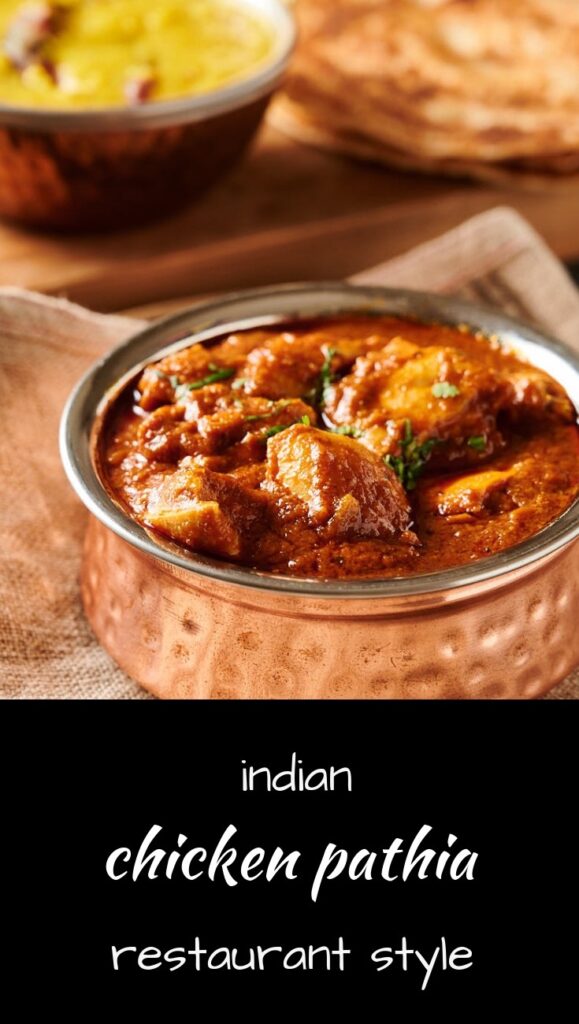

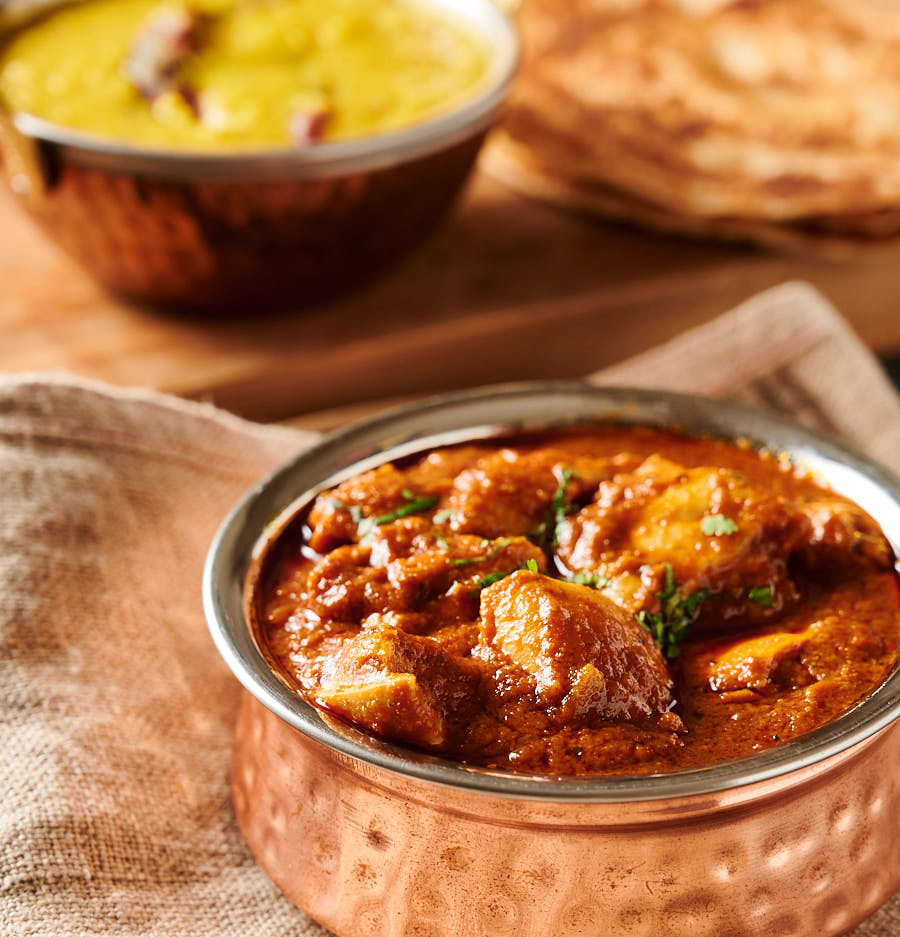
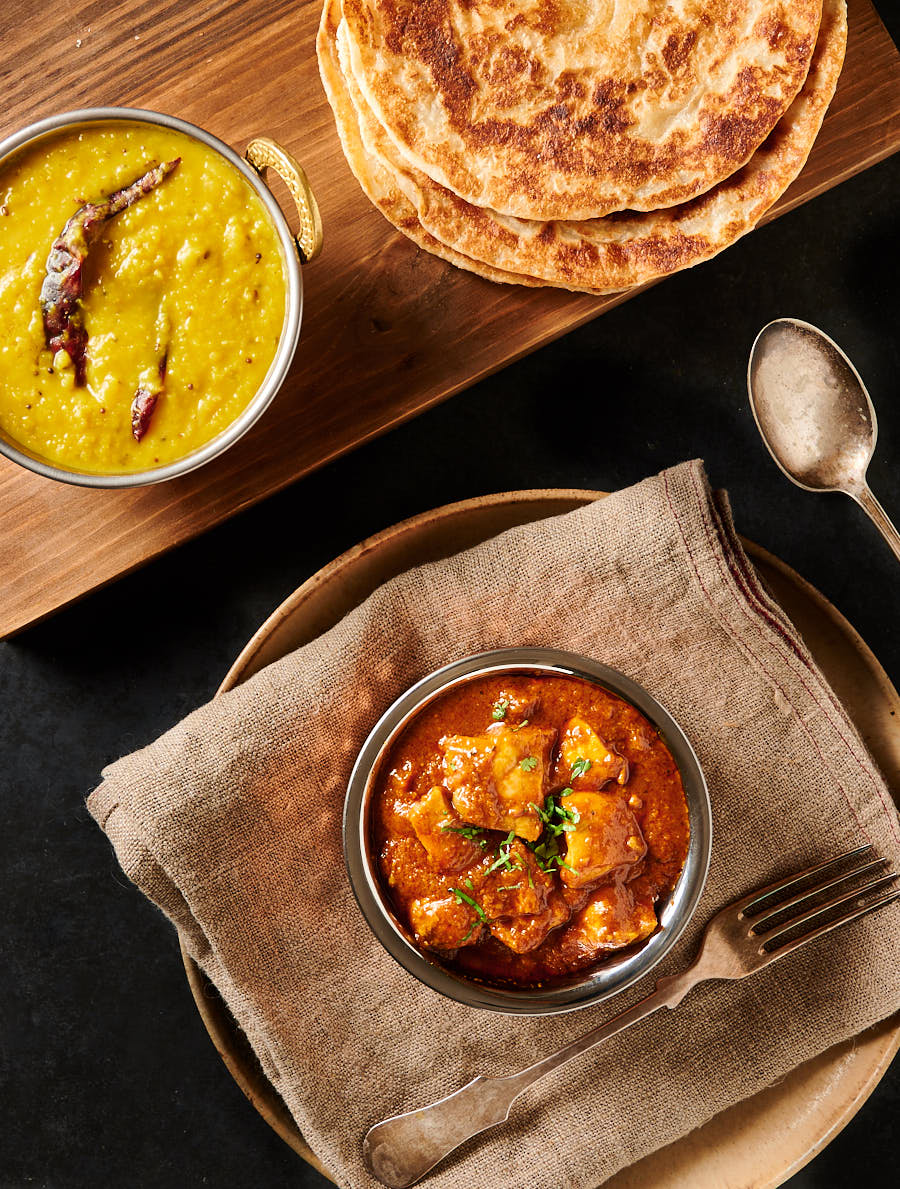
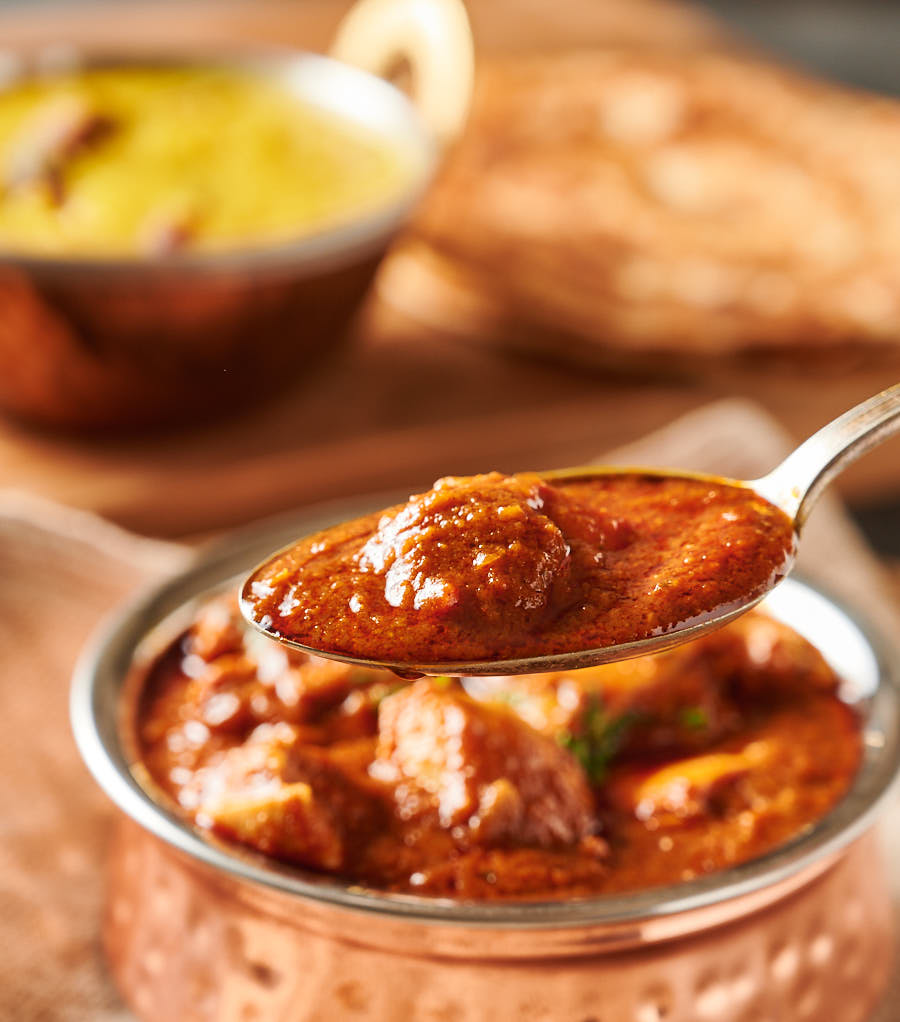
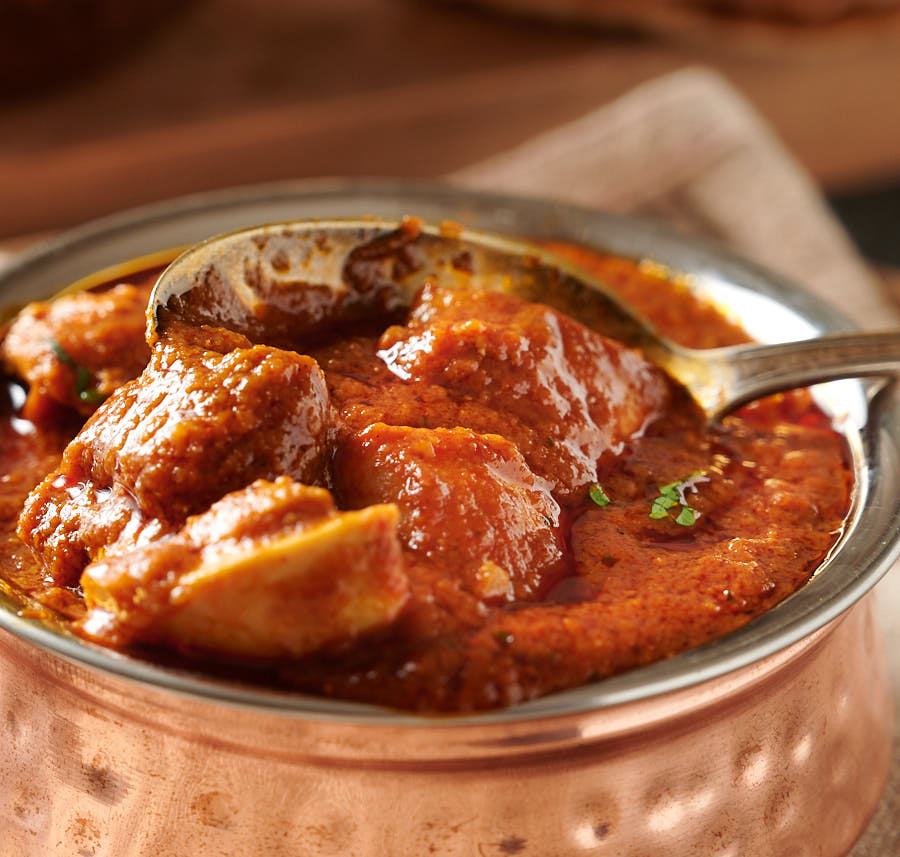
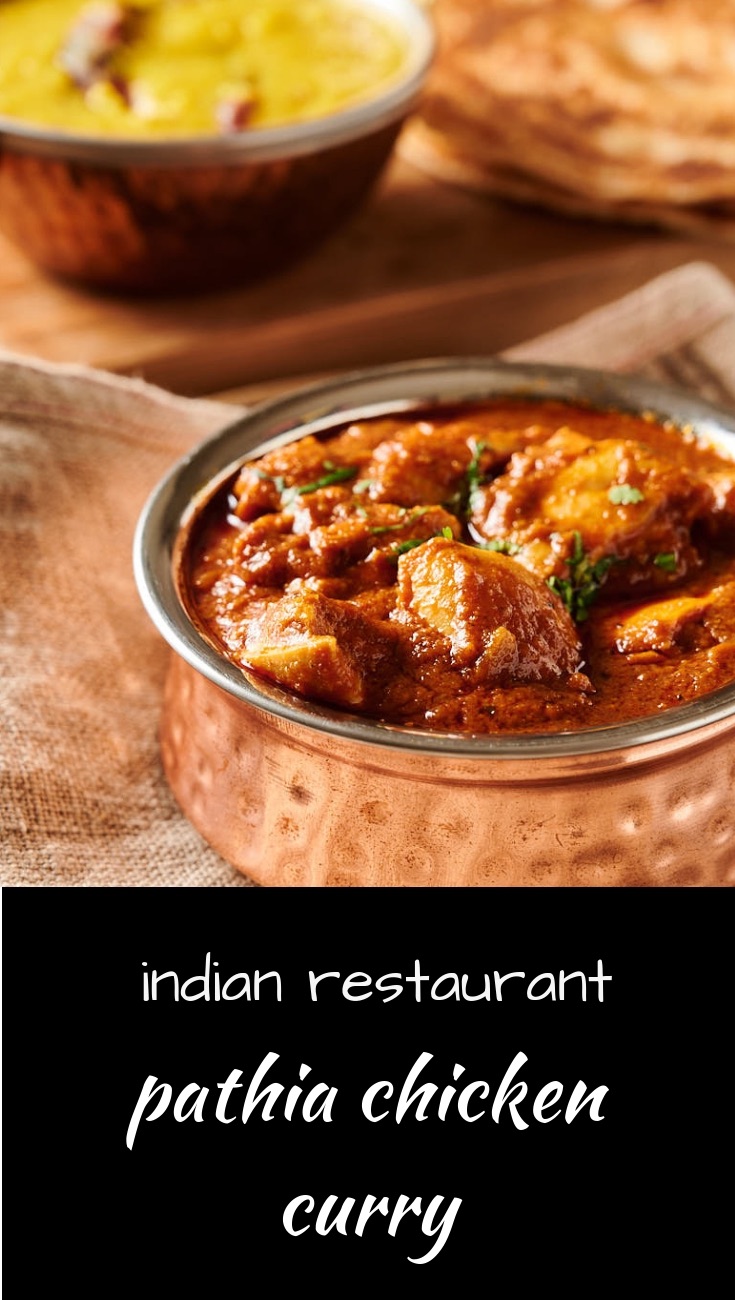
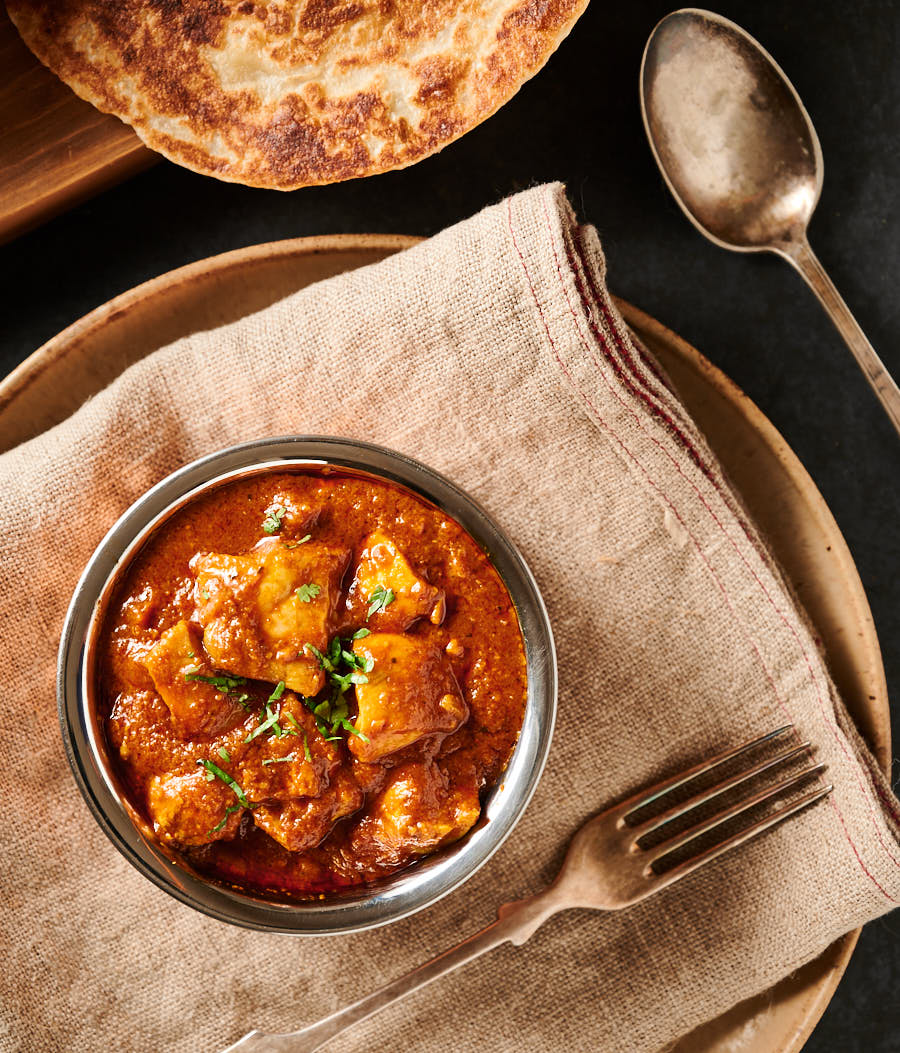
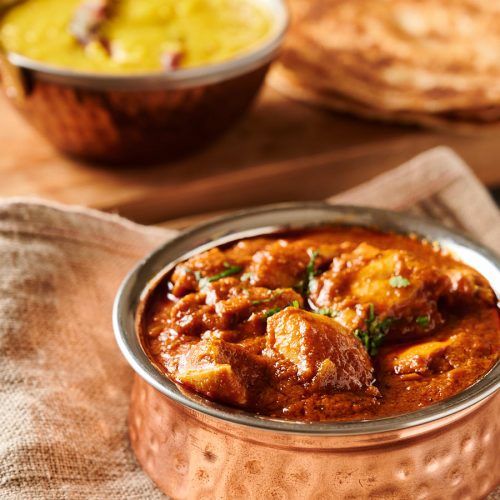
I have not been in the Kitchen for ages. I promised the Mrs I will do a bit more in there. I found your website and spent most of the day in the kitchen preparing things like the base, garlic ginger paste and the spices.
I or my Mrs couldn’t believe what I made the flavours were incredible and bouncing around in our mouths. Thank you so much for sharing I will do a few more restaurant style curries and then move on to hotel style. I think I have found a new hobby. Do you make your own garlic and other pickles? I am having trouble finding them in Spain.
I am so happy to hear this! My whole goal is to get people into the kitchen.
I don’t do my own Indian pickles (yet). They are really easy to get where I am so I haven’t taken the time to start working on them. But maybe now I will!
Can I make Pathia with Hotel style gravy? Thanks
You can make almost anything with hotel gravy. I would try using the same spices but follow the recipe technique from a hotel style. So bloom the spices in oil, add the hotel base and go from there. Don’t try frying the hotel base as described in this recipe though.
I haven’t done a hotel pathia yet but that’s where I’m going to start when I get to it…
Cooking it tonight so I’ll let you know!! “
I tried Pathia for the first time just a few weeks ago, and fell in love with it – I really wanted to recreate it at home, which is how I stumbled on your website. I made this tonight and it was fantastic! I’m really excited to try some of your other recipes too.
Awesome to hear. I hope you find more recipes you like!
iv made the Garlic Chilli Chicken and the Butter Chicken – both amazing, infact my 11 yr old stepson has told me this is his new favourite food and we are going to do some more next week. In the meantime, im going to try this Pathia tonight.
Iv made loads of base but want to try make gravy next as like the look on the texture. Fantastic site, so glad I found and my partner who is a curry freak is converted – so that speaks volumes
Nicola – I’m very glad you are here! The hotel style curries are also a lot of fun. I love both styles but lately I’m just amazed at the flavours I’m getting with hotel style. And I don’t miss the mess too much:-)
A really great page, thanks. I thought I was the world’s biggest pathia fan until I read this. There are two curry houses in my home town back in England that both do fantastic pathias. I live abroad now so miss them terribly. I spend a lot of time with cricketing friends who come from all over India and none of them are familiar with pathia either, which led me to think it’d been a bit of bastard dish like balti (I’m from near Birmingham). The history of it is fascinating. One question, do you have a good suggestion for replacing tamarind (which is hard to get where I am)? I’ve read a mix of lime, brown sugar and a splash of cider vinegar might do the trick. Anyway, thanks for the page.
Glad you enjoyed the story. I have never tried to substitute for tamarind. Note that this is recipe calls for sauce (Maggi Tamarina is what I use) and not concentrate or paste. It is not as tart as tamarind paste and it is quite sweet. Keep that in mind when you try to devise a substitute (or order it online).
Thank you for these recipes.
Just tried this one for the first time and it was okay, but room for me too improve.
1) the garlic ginger paste – says the 6oz of each is 10 servings but with only 1 tbsp serving two in this recipe the volume seems out. Should I be adding more paste to this as the sauce was a little runny (reading up maybe a little more heat was the issue)
Also, to make this spicier and sweeter – more chilli powder, a hotter curry powder, or something else along with more brown sugar?
Thanks for the base start of a great curry, I’ll enjoy experimenting.
The garlic ginger paste recipe (10 servings) is arbitrary for the calorie calculator. Use the amount specified in the recipe.
To make it hotter use a hotter chili powder. Your Indian grocer should have a variety. Kashmiri chili powder is quite mild. Adding too much powdered spice to a dish can throw off the texture (gritty).
I assume you are using a tamarind sauce as specified and not a tamarind paste or concentrate. There should be lots of sugar in the tamarind sauce. If you want it sweeter but not more tart a little jaggery or brown sugar. If you like the tang of the tamarind sauce then maybe half tamarind sauce and half brown sugar to taste.
Re: a little more heat – you want a lot of heat once you add the curry base. A lot. You are frying the base hard – not simmering.
Hi. The recipes look great. Can you tell me why you say not to use a non stick pan. Thanks
I stay away from non-stick because the Maillard reaction is key to getting the depth of flavour. I find non-stick inhibits this. You want a little browning in the pan when you fry the curry base. It’s not the end of the world if you only have non-stick though. Just doesn’t turn out quite the same in my experience…
Made a few curry’s from your recipes and have all came out fantastic. Better than take aways . But all the sauces seem to be on the runny side is there anyway I can thicken the sauce without changing the flavour. Thanks Keith
Push the frying stage (where you add the curry base) harder. You want splatter. That should thicken it up a bit!
Hi Romain. I’m the opposite and find my sauces become slightly like a paste rather than a sauce (but still amazing). How can I improve this? I’ve added more curry base but it just becomes a greater volume of paste! Thanks v much
Paste isn’t one I ever get. How thick is your curry base? It should be like a thin watery soup. Somewhere around light cream. Do you have an ingredient that somehow contains a thickener like flour or cornstarch sneaking in somehow?
Really like your recipes, whether or not restaurant style. I have one question re ‘pre-cooked’ chicken:
• is pre-cooked chicken intentionally prepared just before the rest of the meal, e.g. in this case the pathia, or can pre-cooked chicken be prepared well in advance and even frozen/thawed.
(I understand completely about ensuring absolutely safe reheat temperatures… I also have an instant read thermometer.)
Thank you.
Thank you for saying! Glad you enjoy them.
Pre-cooking chicken in restaurant style curries is more about keeping the curry base from becoming overly diluted.
I’ve cooked chicken the day before but have never pushed it beyond that. The rule I would follow would be only to keep it as long as the flavour doesn’t degrade. If it tastes good to you then it’s OK. Cryovaced (food saver) beef and lamb freeze well but I don’t find poultry fares as well.
Thanks for the reply/advice, Romain.
I haven’t tried the recipe yet. But loved the article. Hence, the five star rating. I’ve lived in many parts of India and tasted many of its fabulous cuisines before moving to the US in my teens. And regardless of where I go, I’m constantly frustrated by the fact that Indian cuisine has been simplified into a tomato-onion based creamy gravy with some dal on the side. So your article cracked me up because it’s so true. And well said. And funny. I ate pathia at a dhaba a long time ago in gujarat and look forward to making your recipe.
Glad you liked it. I don’t know why they don’t mix it up more. There are a couple restaurants where I am that specialize in South Indian which is a nice change.
If you want something a bit more like what they serve in restaurants in India check out my new hotel style curries.
Whatever else I do, I cook. Every day. Or night. Or somewhere in between. I squeeze it in. And I’m always looking for creative recipes. So I can’t wait to try out some of your curries. I’m delighted to have found this site.
Me too! Hope you find something that works for you here:-)